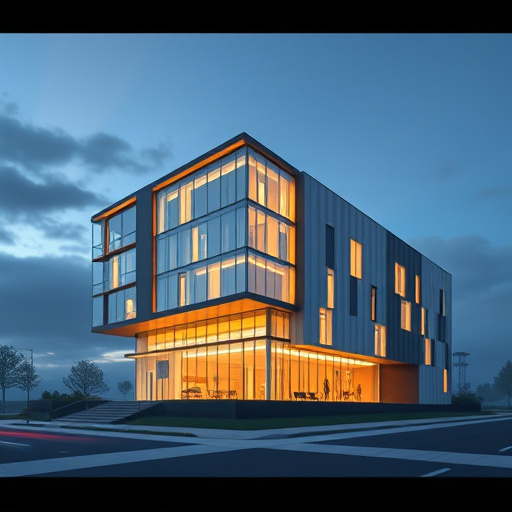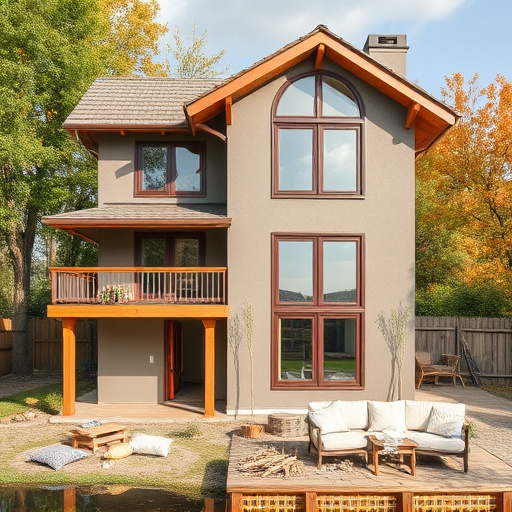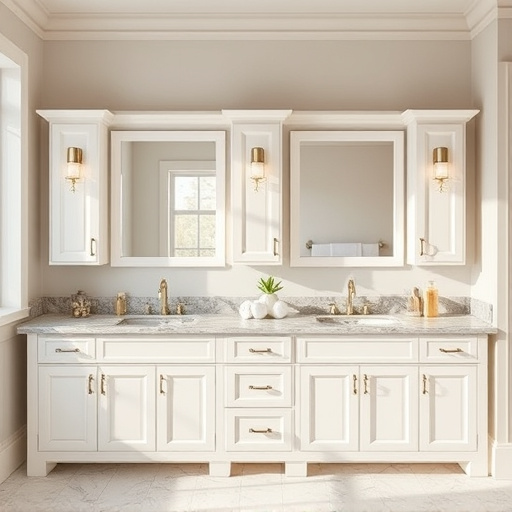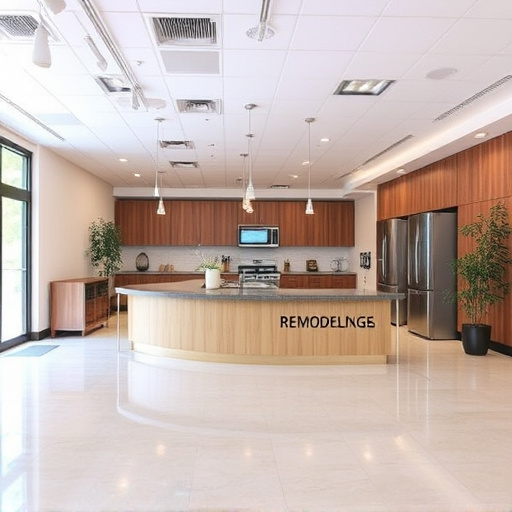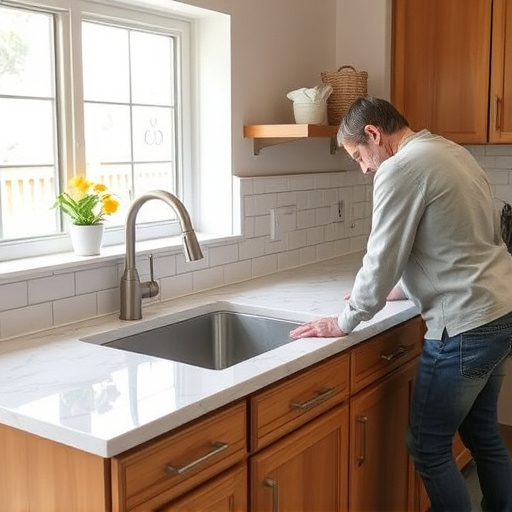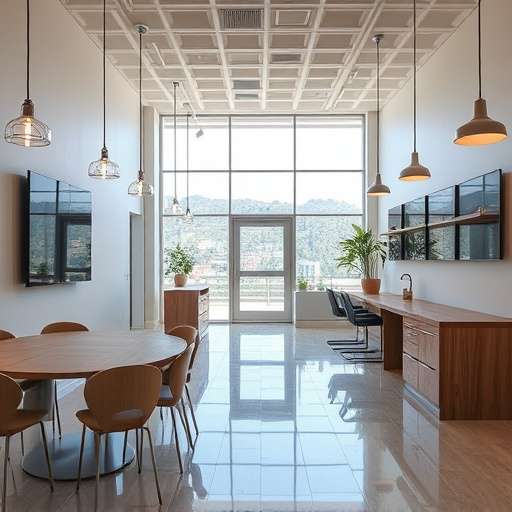Passive design strategies in building design enhance energy efficiency and reduce carbon footprints by leveraging natural elements like sunlight, ventilation, and heat retention. Incorporating renewable energy sources, using sustainable materials like locally sourced wood, bamboo, and stone, along with modular prefabricated construction, promotes healthier living spaces and a greener future. Efficient resource use ensures better insulation and lower energy demands for heating and cooling, contributing to overall sustainability in modern building design.
Reducing a building’s carbon footprint is no longer an option—it’s a necessity. This article explores powerful building design strategies that lead the way in sustainability. From harnessing nature for energy efficiency through passive design, to integrating renewable sources and choosing eco-conscious materials, these approaches transform structures into environmental allies. Discover how modern architects and builders are revolutionizing construction techniques, setting new standards for sustainable practices in the industry, and shaping a greener future.
- Passive Design Strategies for Energy Efficiency
- Incorporating Renewable Energy Sources
- Sustainable Materials and Construction Techniques
Passive Design Strategies for Energy Efficiency
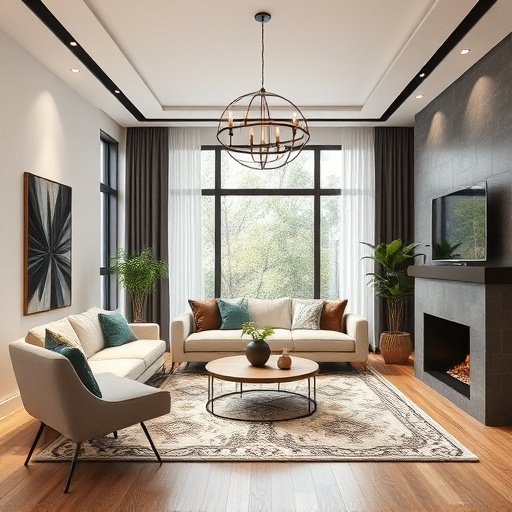
Incorporating passive design strategies is a potent approach within building design to significantly enhance energy efficiency and, consequently, reduce carbon footprints. These techniques take advantage of natural elements like sunlight, ventilation, and heat retention to create comfortable indoor environments while minimizing reliance on artificial heating and cooling systems. For instance, strategic window placement can maximize daylighting during winter months, reducing the need for electric lighting and interior heating. Additionally, proper insulation and air sealing prevent heat loss in colder climates or gain in warmer regions, ensuring a more consistent indoor temperature.
Passive design concepts also extend to effective space planning, especially in home transformations and kitchen remodels. By designing functional spaces that promote natural airflow and cross-ventilation, buildings can be cooled down naturally during warmer seasons. Furthermore, incorporating energy-efficient appliances and lighting fixtures aligned with the building’s orientation and local climate conditions further contributes to overall energy conservation, making these homes more sustainable and environmentally friendly.
Incorporating Renewable Energy Sources
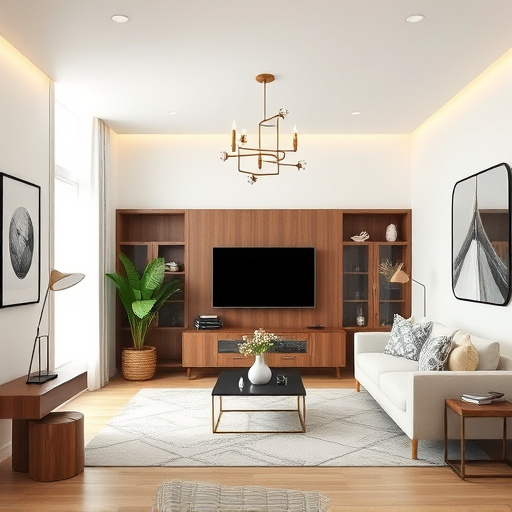
Incorporating renewable energy sources into building design is a powerful strategy to reduce carbon footprints and foster sustainability. Architects and designers can leverage solar panels, wind turbines, or geothermal systems to harness clean energy, thereby decreasing reliance on fossil fuels. This approach not only minimizes environmental impact but also offers long-term cost savings for occupants, making it a viable option for both new constructions and residential renovations alike.
For instance, integrating solar panels into rooftops or utilizing natural ventilation through carefully designed windows can significantly reduce energy consumption. Additionally, floor replacements with efficient insulation and interior painting with eco-friendly materials contribute to overall energy efficiency. Such building design considerations not only promote a greener environment but also create healthier living spaces, ensuring a brighter future for both the planet and its inhabitants.
Sustainable Materials and Construction Techniques
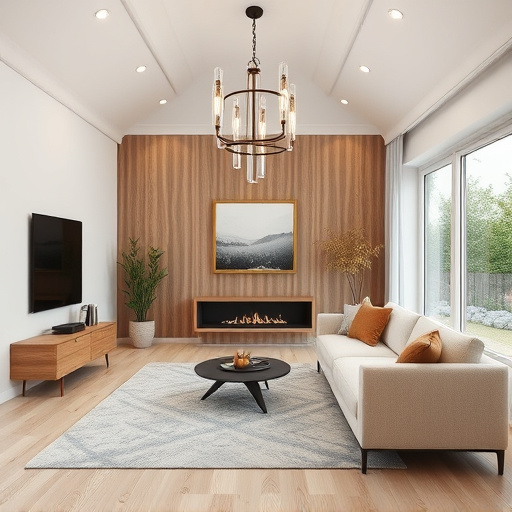
In modern building design, the choice of sustainable materials and construction techniques plays a pivotal role in reducing a structure’s carbon footprint. Architects and builders are increasingly opting for eco-friendly alternatives that not only minimize environmental impact but also contribute to healthier living spaces. Incorporating natural, locally sourced materials like wood, bamboo, and stone reduces the need for energy-intensive manufacturing processes and transportation. Additionally, these materials offer excellent durability and can be recycled or reused in future projects.
One innovative construction technique gaining traction is modular building, which involves prefabricated sections assembled on-site. This method significantly cuts down waste and construction time compared to traditional methods. Moreover, efficient use of resources and precise manufacturing ensure better insulation, reducing energy requirements for heating and cooling. Even interior painting can be transformed into an eco-friendly process with low-VOC (volatile organic compound) paints, further minimizing indoor air pollution and the carbon footprint associated with it. These strategies, when applied to multiple room remodels or home transformations, collectively contribute to a more sustainable built environment.
By implementing passive design strategies, incorporating renewable energy sources, and choosing sustainable materials and construction techniques, buildings can significantly reduce their carbon footprint. These design choices not only minimize environmental impact but also enhance energy efficiency, creating healthier and more cost-effective living and working spaces. Moving forward, the adoption of these practices in building design will be crucial in addressing climate change and fostering a greener future.








